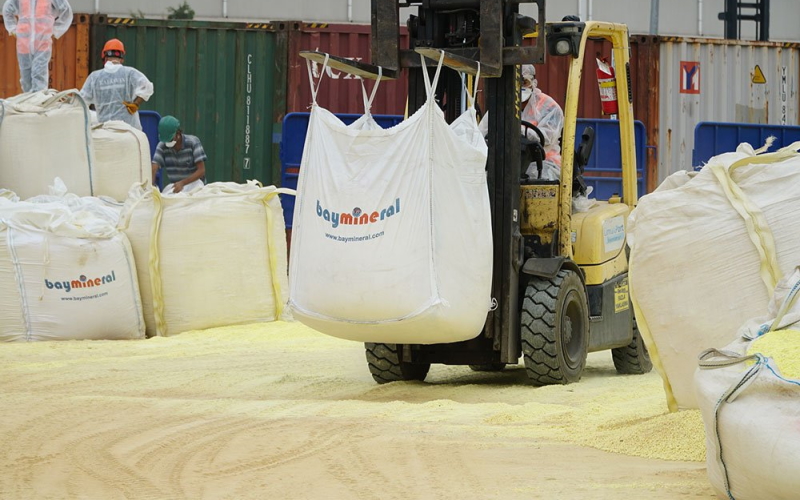This article is also available in:

HISTORY OF SULFUR
Sulfur, whose linguistic origin is claimed to be Persian, means “burning stone” in Latin. It has been accepted as a mysterious and fascinating substance since ancient times, and it has been described as the “stone of philosophy” by alchemists, which is supposed to turn items into gold.
Its discovery dates back to 2000 BC. It is known that in ancient Greece it was used in temples to repel insects and evil spirits. Sulfur obtained from Etna Volcano in Sicily was used for bleaching cotton and making wine. Sulfur was known in the past as a component of all metals, along with salt and mercury. About 4000 years ago, sulfur was burned at religious ceremonies in Egypt. In the Bible, sulfur is referred to as “fire of hell”. Homer, one of the ancient writers, mentioned that in Odysseia, sulfur was used for insecticides and air purification. Sulfur was used in the firearms used in the wars in the Middle Ages. There are records in the history of the pharmaceutical industry that sulfur was used as a tonic. The Romans used sulfur in the treatment of certain diseases and firearms. Sulfur, which was used for various purposes in history due to its flammable feature, was found in yellow figures in some historical caves. In the past, sulfur was also burned in rites in churches. In the 17th and 18th centuries, scientific studies on sulfur were made, began to be used in industry, and sulfuric acid was identified as an important ingredient. French chemist Antonie Lavoisier described sulfur as a compound of hydrogen and oxygen in 1777 as a chemical element. In 1810, this definition was confirmed by experiments by French chemist Joseph Gay Lussac and Louis Thenard. The “Frasch method” developed by German-born American chemist Herman Frasch to obtain sulfur in December 1894 is still used in sulfur deposits today.
Sulfur, represented by the symbol “S” in the periodic table, is one of the elements of group 6A with 16 atomic numbers. It is a flammable and explosive nonmetal that can be used as sulfur, powder and liquid.
PHYSICAL AND CHEMICAL PROPERTIES
Sulfur, the chemical symbol of which is “S”, is a nonmetal element in the form of pure crystal with atomic number 16 in group 6-A of the element table. It melts at 116 degrees, boils at 445 degrees. It is a pale lemon-yellow color, tasteless, odorless, lean, fragile and solid chemical element. Its thermal and electrical conductivity is very low; therefore, it is a good electrical insulator. It has flammable and explosive properties. It burns easily, has a small blue flame. It is insoluble in water. It can form compounds with various non-metallic elements. Metals burns in sulfur vapor as well as oxygen to form sulfides. As it can be understood from this feature, sulfur shows similar chemical properties with oxygen. If ground sulfur is mixed with soil, it oxidizes in sulphate form. The reaction is very low at room temperature; It can react with substances such as fluorine and mercury. It accounts for approximately 0.06 percent of the Earth’s crust. It is estimated that there is a large amount of sulfur in the deep layers of the world. Seawater contains about 0.09% sulfur as sulfate. Formations in nature can be free and compound. The ore of many important metals such as lead, zinc, iron, copper and aluminum contain sulfur or sulfur compounds. Some natural gases also exist in the form of hydrogen sulfide. Fossil fuels and coals can also be found in sulfur. Volcanic deposits are found naturally in gypsum (calcium sulfate) and limestone layers. Sulfur can be found near the surfaces formed by salt columns and in old evaporated basins. There are sulfur deposits formed by the transformation of layers of thick gypsum at the sea bottom. Sulfur has low thermal conductivity and no electrical conductivity, so it is a good insulator. However, electrical conductivity is high in humid or pyrite environments. Negative is electrified by friction. Its optical character is positive, and its double refraction is high. In hot weather, it can melt with friction and burn with a light blue flame. It does not x-ray rays.